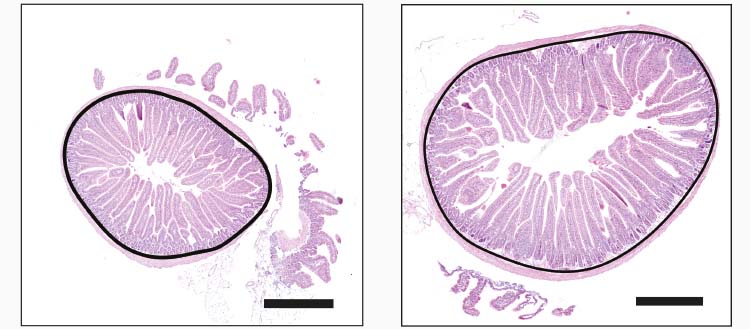Size of the gut regulates caloric uptake
Morphology of the intestine and its capacity to absorb nutrients have profound effects on obesity and its complications. However, importance of the intestinal plasticity and the mechanisms involved remained until now poorly understood.
Researchers from the laboratory of Prof. Mirko Trajkovski have pioneered the discoveries that the gut changes its size in response to various stimuli, finding that exposure to cold increases gut length and absorptive surface in part through changes in the gut microbiota. Since then, accumulating evidence, including a seminal study by UNIGE researchers, provided insights into the main stimuli and mechanisms by which an excessive amount of food increases the intestinal surface.

Sections of mouse intestine. Left, a normal gut circumference (in black) and villi (pink convolutions). Right, expanded gut in overeating-induced obese model with a bigger circumference and longer villi. © UNIGE / Mirko Trajkovski’s lab
In their most recent work published in Nature Metabolism, the scientists place current the knowledge on this gut plasticity into perspective in regulating the energy balance. Trajkovski and colleagues reveal that the intestinal remodeling is part of the normal physiological adaptations to various triggers, and propose that utilising the reversible gut plasticity can hold a great promise for the developing therapeutic approaches to global health challenges, such as obesity, diabetes and fatty liver disease.
Interested to learn more?
To discover more about gut plasticity and the potential therapeutic perspectives of exploiting its reversible nature, download their recent paper published in Nature Metabolism.
15 Nov 2022
